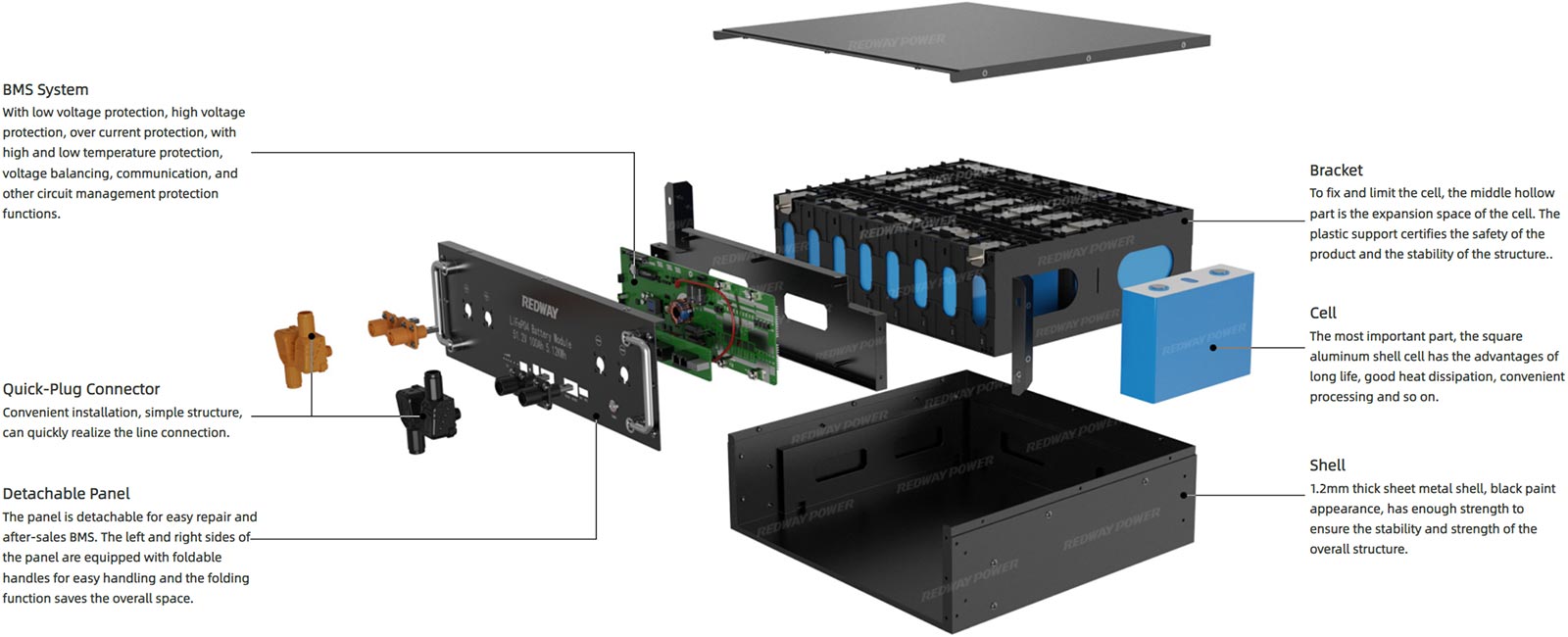- A rack battery system is a collection of batteries housed in a single rack or cabinet that can be used to provide power backup or storage for various applications. The batteries in a rack battery system are typically connected in series or parallel to achieve the desired voltage and capacity. The system usually includes a battery management system (BMS) to monitor and control the charging and discharging of the batteries.
- One of the main advantages of using a rack battery system is that it simplifies the installation and maintenance process, as multiple batteries can be housed in a single cabinet. Rack battery systems also typically have a higher energy density than individual batteries, which means they can provide more power in a smaller space. Additionally, a rack battery system can provide a more consistent level of performance, as all the batteries are connected and controlled by a single BMS.

- To choose the right rack battery system for your needs, you should consider factors such as the required voltage and capacity, the expected load, the available space, and the budget. It is important to select a system that can provide the necessary power backup or storage for your specific application, while also fitting within the available space and budget.
- The different types of rack battery systems available in the market include lead-acid batteries, lithium-ion batteries, and flow batteries. Lead-acid batteries are the most common type of rack battery and are typically used in applications that require a low to medium power output. Lithium-ion batteries are becoming increasingly popular due to their higher energy density and longer lifespan. Flow batteries use a liquid electrolyte to store energy and are ideal for applications that require long-duration energy storage.
- When designing a rack battery system, factors such as the required voltage and capacity, the expected load, the available space, and the budget must be considered. The system should also be designed with the appropriate BMS and backup power sources to ensure reliable performance in case of power outages or other disruptions.
- To maintain a rack battery system, regular inspections and maintenance are necessary to ensure the batteries are functioning properly and efficiently. This can include monitoring the charge levels, checking for corrosion or damage, and replacing any faulty batteries or components. It is also important to follow the manufacturer's recommendations for maintenance and to keep the system clean and dry.
- The lifespan of a rack battery system depends on several factors, including the type of battery, the usage patterns, and the quality of the system components. In general, lead-acid batteries can last between 3 to 5 years, while lithium-ion batteries can last up to 10 years or more. Regular maintenance and proper usage can help extend the lifespan of a rack battery system.
- Common problems with rack battery systems include issues with battery capacity, voltage imbalances, and battery failure. These problems can often be addressed by replacing faulty batteries, recalibrating the BMS, or adjusting the system settings. Regular maintenance and monitoring can also help identify and prevent potential issues before they become more serious.
- Safety considerations when using a rack battery system include proper installation and grounding, regular inspections and maintenance, and following the manufacturer's instructions for use. It is also important to ensure that the system is properly ventilated to prevent overheating, and to take precautions when working with batteries, such as wearing protective gear and avoiding contact with the electrolyte.